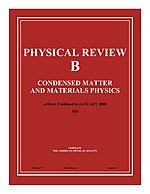Adiabatic and nonadiabatic energy dissipation during scattering of vibrationally excited CO from Au(111)
Meng Huang, Xueyao Zhou, Yaolong Zhang, Linsen Zhou, Maite Alducin, Bin Jiang, and Hua Guo

Abstract: A high-dimensional potential energy surface (PES) for CO interaction with the Au(111) surface is developed using a machine-learning algorithm. Including both molecular and surface coordinates, this PES enables the simulations of the recent experiment on scattering of vibrationally excited CO from Au(111). Trapping in a physisorption well is observed to increase with decreasing incidence energy. While the energy dissipation of physisorbed CO is slow, due to weak coupling with both the phonons and electron-hole pairs, the access of the impinging CO to the chemisorption well facilitates its fast vibrational relaxation through nonadiabatic coupling with surface electron-hole pairs. The latter is proposed as a mechanism for the experimentally observed fast as well as slow components of the CO(ν=1) product.
- Received 17 May 2019
- Revised 1 November 2019
Available for purchase here.
